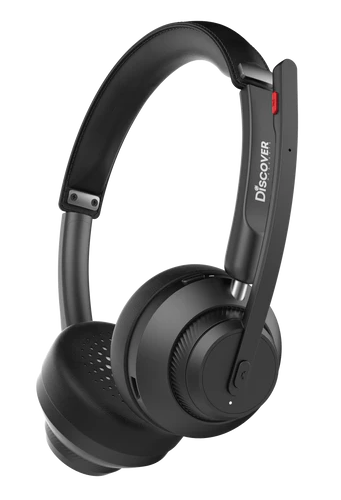When you picture the practice of proper computer workstation ergonomics, we typically develop an image of proper neutral postures and ergonomic equipment or furniture such as office task chairs, standing desks, and vertical mice, and split keyboard to just name a few. However, headsets are sometimes overlooked but can make a huge impact on proper neck and shoulder postures when working.
Read MoreErgonomic consultants would likely tell anyone that is working off a laptop for more than a couple hours a day should move towards a proper setup involving an external keyboard and laptop stand. This is all aside from ensuring that your desk and chair are at the correct height for you. However, many folks end up working on the go style. So, what does one do to prevent ergonomic risk factors from putting them at risk of a musculoskeletal injury over time? Although you will likely never achieve an ideal setup, you’re not totally out of luck and with the following tricks and tips, you can participate in that 3-hour commute on a plane, train, or tech-bus without feeling like a repetitive strain injury is lurking around the corner!
Read MoreDo you wander what the various hazards are present behind the scenes in your local pharmacy? Well, believe it or not, the pharmacy is one of the highest departments with ergonomic related risk factors. The reason being is the high repetition of various tasks, especially since there needs to be a lot of computerized systems that workers interact with that ensure that people are getting the correct prescription.
Read MoreMusicians come in a variety of flavors, you have wind instruments such as a trombone to which one shoulder is flexed forward frequently, to percussion instruments that involve a lot of frequent dynamic upper and lower extremity movements. So, this blog is about the basics of ergonomics that can be applied to whatever instrument you play. If you don’t have close to excellent ergonomics, you have a chance of incurring a cumulative injury that can get you cut from the band! We will discuss primarily the shoulder this time.
Read MoreIt is a misnomer that company wellness is a program that only suits medium to large sized companies. I have seen many small and growing companies utilize company culture that focuses on their employees well being and sense that their company cares not only about the bottom line but their most important asset: people.
Read MorePromoting ergonomics in the workplace is not a simple project. It requires multiple steps including injury prevention measures to managing the care of the employee. Across all types of industries, back injuries are among the most prevalent type of injury among workers. So having a solid ergonomics plan in the workplace will inoculate a strong focus on back health and preventing other cumulative related injuries. Exploring ways a company can encourage back safety in the workplace can reduce future company workers compensation costs and keep your employees healthy and happy.
Read MoreSelecting the best ergonomic conference to attend requires the consideration of various things so it’s best to weigh out the criteria. Just remember to prioritizing those with a strong academic focus, relevant content, esteemed speakers, networking opportunities, and a good reputation. This way you can maximize your professional development and stay at the forefront of the ever-evolving field of ergonomics. Investing in quality continued education and professional growth benefits you and those you serve.
Read MoreStudies related to industrial ergonomics focuses on the intersection between biomechanics and human behavior. It seeks to elucidate the intricate mechanisms governing spinal health. It investigates the complexities of spinal biomechanics and employs sophisticated methodologies to unravel its intricacies and inform targeted interventions.
Read MoreThe significance of ergonomics in workplace design should not be overlooked. Let us unravel the 6Ws (Who, What, When, Where, Why, and How) of applying workplace ergonomic principles to create a workplace free from harm that enhances productivity as well. It sends a strong message that the company cares about its greatest resource: its employees.
A well-designed workplace is one that prioritizes the ergonomics principles encapsulated in the 6Ws. From considering the diverse needs of user groups, to the implementation of principles in the early on stages of workstation design. These approaches reduce the costs associated with ergonomic related injuries and contributes to a happy and healthy workforce.
Read MoreThe purpose of this article is to explain research done on a participatory ergonomic intervention in kitchen work. The intervention was aimed at reducing musculoskeletal disorders (MSDs) which rank as the highest percent of work-related injuries in the workplace. Having a participatory approach means that the employees of the company that do the work were actively part of the analysis and planning behind the improvements made to their own work environment. This has been shown to be an effective strategy and one such study was conducted in municipal kitchens across four large cities in Finland. The focus was on schools, kindergartens, nursing homes, as well as geriatric service centers.
Read MoreThe increasing prevalence of work-related musculoskeletal disorders (WMSDs) among computer workers has sparked concerns, given the widespread use of computers in the USA. This short read blog explores one scientific study that explored the effectiveness of workplace training interventions aimed at reducing musculoskeletal discomfort among workers of office settings.
Read MoreWhen an ergonomics consulting company such as Ergobility is approached to support the launch of a musculoskeletal injury (MSD) prevention program, the key to success is to be systematic and work with the company culture and process. The vision is to save company dollars by avoiding workers compensation costs but also to improve morale and productivity. MSD prevention programs have been proven to improve to also decrease absenteeism and improving employee engagement.
Read MoreThere are varying techniques computer users employ when operating their mousing device. The type of mouse makes a difference, and an ergonomic specialist can match the best type of mouse including size and features to reduce awkward postures and improve comfort. The initial part of this type of assessment is careful observation and investigation into any pre-existing issues such as tendonitis or carpal-tunnel syndrome.
Read MoreHaving a blame-free environment in workplace is one of the most pivotal elements of a safety and ergonomics program. A work atmosphere without reprimand nurtures trust and open communication, which in turn, fosters a collective commitment to workplace safety and ergonomics.
Read MoreWearable technologies including Virtual Reality (VR) and Augmented Reality (AR) offers immersive experiences into amazing things such as an unique destination, career training, or gaming. This technology has been ramping up in popularity and with that are ergonomic challenges. The primary concerns are motion sickness and eye strain.
Read MoreAnthropometrics is the study of human body measurements and proportions. It is used throughout the centuries from design and architecture to modern day ergonomic furnishings and even the design of plane cockpit. The study involves the collection and analysis of physical characteristics such as sex and limb lengths to understand the diversity of human dimensions.
Read MoreThe study of the mechanics of human movement is called gait analysis. It is a fascinating field of study
that provides us insight into how we walk, run, and perform various activities. These studies benefit
especially athletes and those that work to provide physical therapy and other healthcare related
therapies. Ergonomics emphasizes the benefits of movement. It allows greater blood flow which
benefits tissue repair, reduces ill effects of sedentary lifestyles such as working at a computer, and
increases our mental wellbeing. Therefore, ensuring that you stay moving is critical and the studies
behind this is gait analysis.
Read MoreIn the highly competitive and evolving world of e-sports, the hardcore gaming participants compete at the highest levels. They are usually pushing not only their mental but also physical capabilities to the limit. If you think of working at the computer can incur some ergonomic related risks especially repetitive motions, these players are taking the pedal to the metal on their bodies…and while exceptional gaming skills are critical, another big factor plays into their success and longevity in the industry: ergonomics.
Read MoreIf you ever remember the old IBM keyboard, you may be familiar with a mechanical keyboard. These types of keyboards are making a comeback over the years especially with gamers and versed typists. Their tactile feedback, durability, and customizable features make them attractive for high tech and new age computer users. In this article we will explore the importance of how mechanical keyboards can contribute to improving our computer ergonomics.
Read MoreThe tech boom has us scoping out efficient ways to maximize productivity while safeguarding our physical wellbeing including ergonomic related disorders such as musculoskeletal disorders (MSDs) and repetitive strain injuries (RSIs). The primary ergonomic risk factors at a computer workstation include awkward postures, repetitive motions, static postures, and contact pressure. The awkward postures, repetitive motions, and contact pressures can be avoided with training, equipment, and a proper setup. The one thing that usually can not be controlled is the amount of load on various parts of the body. For instance, using a mouse usually puts an unusually high amount of stress on the right wrist. So with improved mechanics or a device that helps reduce deviational movements or awkward positioning would be of benefit. However, the workload requirement on that hand is still a lot for some people. Gamers that have a coding job for instance, can find themselves in front of a computer for more than 12 hours a day! What can be done for them even after multiple ergonomic evaluation sessions.
Read More



















